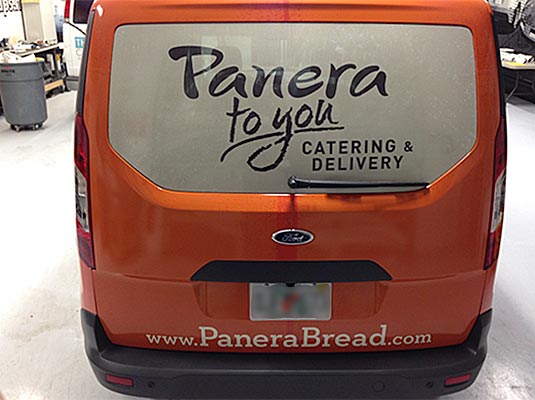By Laura Michaels
Panera is ready to double down on delivery in 2017. With 15 percent of the system already in the delivery business, Panera Bread Co. will expand that figure to 35 to 40% by the end of 2017, said company President Blaine Hurst.
In a February 8 conference call with analysts, Hurst said Panera sees the potential to “change the delivery paradigm by offering a fast-casual, higher self-esteem experience through our menu offerings and our service.”
Offering delivery, Hurst said, will help differentiate them from the rest of the fast-casual chains, since they are “very different from the typical commoditized pizza players and Asian offerings that are widely available for delivery in most of America.
“We believe Panera has moved extremely quickly to capitalize on that white space for healthful, high-quality salads, soups and sandwiches in the $40 billion delivery market,” he said on the call.
Their investment in delivery continues Panera’s long-term strategic plan, which includes growing what CEO Ron Shaich called an “omni-channel experience” focused on expanding the company’s efforts in rapid pickup, catering, delivery and the Panera at Home consumer line.
St. Louis-based Panera added delivery to 22 additional company stores during the fourth quarter of 2016, along with 17 franchise locations, bringing the system-wide total to 306 restaurants. Delivery is producing real volumes, Shaich noted, with delivery sales approaching $5,000 per week per company café within six to nine months.
Panera bet big on digital investments three years ago with the introduction of Panera 2.0—kiosk and mobile ordering, and integration with Apple Pay—things Hurst said are proving key to the success and rapid rollout of delivery across the system. The company’s MyPanera loyalty program has helped build delivery awareness.
“Because we’ve already made this investment in our digital capabilities, delivery requires de minimis capital expenditures and a modest startup investment of about $25,000 per café, primarily related to hiring, training and the grassroots marketing efforts to build customer awareness,” said Hurst.
The largest hurdle, meanwhile, has been the hiring and training of drivers, as Panera elected to employ its own delivery drivers versus contracting with a third-party service. Despite that challenge, Hurst said Panera has a competitive advantage in hiring drivers compared to most other delivery opportunities. He cited better working hours, “given that most of our deliveries occur during weekday lunch versus late night or on weekends,” and bigger tips, “because our deliveries go primarily to office workers.”
Employing drivers is also crucial to ensuring a consistent experience, according to Hurst.
“We found that having Panera people deliver Panera food results in a better guest experience and actually in better economics,” said Hurst. “Given our volumes, we can effectively optimize our delivery force. They work both in our cafés as well as drive for us.”
Cheesecake Factory, meanwhile, has taken a different approach, partnering with DoorDash to expand delivery to half of its 194 locations.
“We’re seeing some incremental sales in many locations,” said David Overton, Cheesecake Factory’s CEO, during an earnings call February 22. “In fact, our to-go business increased in 2016 and we believe delivery was a key contributor to this growth.”
The Calabasas Hills, California-based chain plans to introduce DoorDash delivery to additional locations this year and could also partner with other services to reach markets where DoorDash doesn’t have a presence.
“Really, we’ll go as far as we can with DoorDash,” said President David Gordon, who also noted incremental sales are mainly coming from markets where delivery in general is already entrenched and Cheesecake Factory can benefit from that.
“And we are seeing a higher average check on the delivery orders as well, with desserts contributing to the majority of that,” Gordon said.
Company executives also noted that while Cheesecake Factory pays a fee for its third-party delivery, some of those associated costs are being offset by reduced costs in the restaurant. Delivery customers aren’t using plates and napkins, and they don’t take up servers’ time, executives said.
Back at Panera, Shaich believes delivery is “probably as powerful initiative as we’ve seen in Panera in a long, long time—maybe the initiative of the decade in Panera.”


